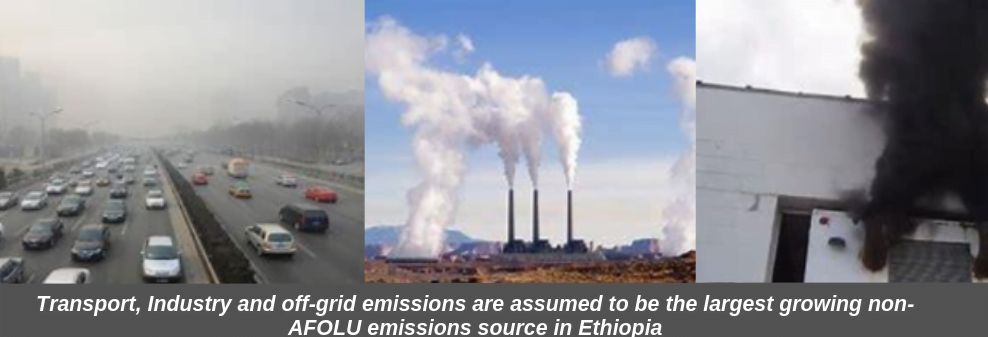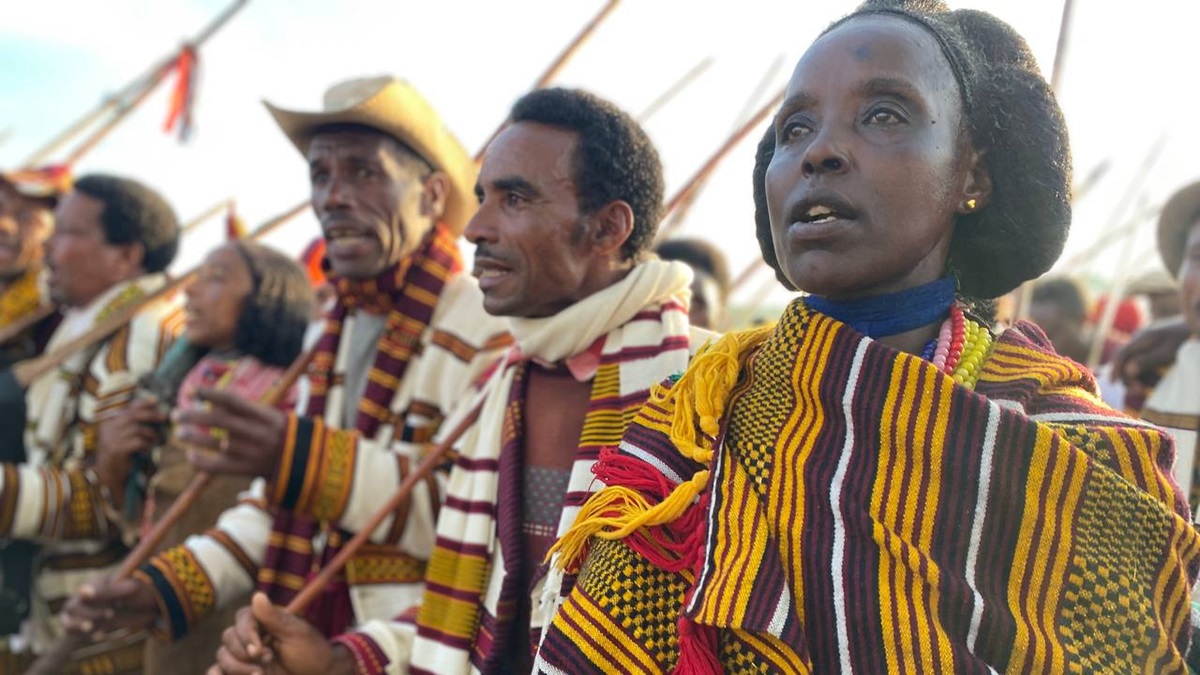Commentary: The Nextgen Carbon market: Turning our emissions to dollars, outcome of #COP24
Ambachew F. Admassie, for Addis Standard
Part 3
Addis Abeba, January 28/2019 – Ethiopian online media outlets recently broke the news that there is a discussion going around some policy circles over reforming the regulation related to vehicle imports. It reportedly runs in the direction of prohibiting or levying higher tax over import of vehicles that are older than certain years of age from date of manufacture. We have also heard from participants in the Tech sector discussion that Ethiopia’s Agricultural Transformation Agency (ATA) aims to promote solar irrigation pumps. These are traditionally considered as exclusively domestic policy and implementation experiments until we start to reflect on who should reasonably bear the implementation cost of such policy? Such policy has cost as well as benefit to local health and wealth but also has impact on the greenhouse gas emissions trajectory of the world and hence a bearings in terms of Ethiopia’s implementation of its Nationally Determined Contribution (NDC) under the Paris agreement? Can Ethiopia transfer part of this “policy cost” to the international community than entirely dumping it on the domestic public? To what extent may such measures be internationally credited under the “cooperative mechanisms” of the Paris Agreement, including the carbon market? We are posing these queries with the intent to reflect that every domestic policy or action affecting fossil fuels consumption or our emissions trajectory, leads to our “relationship” to the Paris Agreement. Are domestic Policy makers listening? They should, because price has already been put on carbon internationally and it affects “our national pockets” in many ways or we are losing our opportunities cost. Welcome to the carbon market!
#COP24 happened in the “coal tinged” Polish city of Katowice, at a huge regenerated venue that was previously a coal mine. Among more than 30, 000 attendants, Ethiopian team participated in many thematic areas including two delegates in the carbon markets. This negotiations in last December covered many thematic agenda relevant to the success of the Paris Agreement. This article exclusively dwells over the outcomes related to the next generation carbon market, which market deals with Internationally Transferred Mitigation Outcomes (ITMOs) that result in securing revenues for one’s low carbon achievements. Many concepts were included in the draft text heading to becoming the rule book, still on the drawing board though, that affects how we may finance shifts to low carbon technologies used in our economies and formulation of associated development policy matrix.
The carbon market, effectively launched after 2001 under the 1997 Kyoto Protocol is entering a historic dimension. Conceptually, it is a market that buyers and sellers transact emissions reduction units. Sellers sell for recovering the cost of mitigation while buyers primarily buy for compliance purpose. To some extent there also were buyers demonstrating corporate social responsibility. In the next decade, new buyer segments like Aviation and Maritime operators would be mandatorily included. In the past a unit carbon-dioxide equivalent reduction of any greenhouse gas was used to be traded while in the near future few other matrices that have impact on greenhouse gases trajectory would be included. Some percentage share of proceeds from each transaction used to be and will still be used to fund Adaptation efforts of countries, to a changed climate. The rule book for this new market is currently under negotiation with the “first operational rules” anticipated to be agreed by end of 2019.
The outcome of the Climate Change negotiation on COP-24 related to Article 6 (Cooperative Mechanisms) of the Paris Agreement at least in the texts as they currently exist, cover several aspects including how or whether domestic policies could affect baselines, that are the “reference scenario” used to generate units out of actual activities and are internationally traded.
Article 6.2 covers the type of carbon market that allows states to transfer net national emissions savings to another state in return for agreed rate. Article 6.4 covers the type of carbon market that allows specific measures by entities to transfer emissions savings to another state in return for agreed unit rate. In both cases mitigation outcomes transferred will be used by overseas installations and intern the associated state to demonstrate that they have met their Paris targets. Obviously the former (6.2) is a bit cumbersome to apply for low income countries and even to most advanced states, as it requires nationwide inventory very frequently covering all sources of emission in a host country. It also needs domestic infrastructure that ensures that installations that have allocations and have performed well will have to get their share of the revenues while in reality their achievements might be eliminated by under performers in the same host country, resulting in net negative national emissions saving and hence no access to the carbon market. This would create tension and reluctance among carbon market actors. On the other hand the later (6.4), is much straight forward as it allows specific installations to participate in the market for the low carbon technology/measure they realize as per set international standards and monitoring plans. The challenge with 6.4 is on whether states with mitigation targets under Paris have actually met their contribution before exporting a mitigation outcome overseas. This concern is arguably zero for Least Developed Countries, who were expected to submit “low emissions development strategies and plans” unless they wished to have some targets as “unconditional” contribution. A third cooperative mechanism, albeit being non-market, has been agreed under Article 6.8. This one allows countries to cooperate on technology transfer, development funding, capacity building and other matters without resulting in any internationally transferable mitigation outcome.
The negotiation on the rule book for these two markets narrowed the eligible trading units to few metrics, and gave mandate to the relevant technical body that would work on further details on governance, infrastructure, reporting & transparency, standards, registry & international transaction logs as well as how to achieve environmental integrity, corresponding adjustment and overall mitigation of global emissions. All of these are tough technical concepts that are very cumbersome and at times irrelevant to cover in this article. However, there are some concepts that are very critical to inform our policy makers and the private sector over why we will still be losing in this market, as we did in the past, unless we decide to listen, participate and acknowledge it matters. One such concept is impact of domestic policies on crediting.
The concept of “policy adjusted baselines” directly relates to such policies as the “car imports” regulation under discussion. In the Ethiopian situation the NDC is not clear whether it aims to consider baseline at the level of existing policies it the NDC base year (2010). If it considers such “autonomous” mandatory policies as part of the business as usual, the emissions difference between newer vehicles vintages compared to those older than the legislated age threshold would automatically be considered to fall in the business as usual emissions scenario. This becomes catchy in a situation where neither fleet vintage renovation is not included in our NDC nor is the state convinced that the domestic “health and other benefits” of this policy would outweigh the fleet renovation cost transferred to domestic car owners. This renders the associated value of greenhouse gas reduction benevolently foregone to the international public as “unconditional contribution”. This would result in the whole differential cost of policy to be borne by Ethiopia, in this case the car owners. This is not trivial in the current carbon priced world!
If Ethiopia argues to set the policy baseline as in the policy available in the base year (2010), the above cost has the chance to be split between car owners and the international community. In the past carbon markets incentivized the whole margin of a shift from older coal thermal plants to fuel efficient super critical coal fired plants, although entertained criticism from environmental groups. Pragmatically still, conservative baseline can be set considering how old age one can practically allow, especially when they have impact on health and fuel consumption. Socially also, ignoring pollution entails electoral dissatisfaction that would compel democratic governments to act in the direction of newer vintages, which we just seem to currently observe, to the extent the renovation cost doesn’t trigger reverse uproar from want-to be car owners. This requires setting the policy’s age threshold at an educated vintage including through observation of fleet trends in other countries, and reasonably above five years. Such policy on the one hand reflects a better sense of overall global “equity” and on the other hand provides reasonably attractive baselines for those who voluntarily wish to migrate to deep-cut lower carbon options, in return to participation in the carbon market. At the moment for example, one Ethiopian carbon market project promoted under the name “Move-Ethiopia Zero Carbon mobility units program” has already entered the international accreditation system with the intention to generation more than 4,000,000 internationally fungible ITMO units in the post 2020 space. Setting mandatory policy at unrealistically new car vintage would hence introduce unnecessarily conservative baselines that would truncate anticipated reductions claims in this market. This warrants every such policy to be adequately consulted with the Environment & Climate change commission as well as carbon market actors. This is tip in the iceberg in the vast and innovatively unfolding carbon market! AS
Editor’s Note: Ambachew F. Admassie is developer of “Move-Ethiopia Zero Carbon mobility units program” targeting the carbon market. He can be reached at ambachew.admassie@gmail.com and tweets @Ambachew41
Please find Part one of this series here, and part two here.








